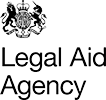Dress code and appearance in the workplace
ACAS has issued new guidance on dress codes and appearance in the workplace. Dress codes are often used in the workplace for a variety of reasons, for example, to portray a corporate image or for health and safety reasons.
The ACAS guidance identifies the central issues for the employer to consider rather than being prescriptive about what should or shouldn’t be allowed.
The fundamentals
The guidance identifies 4 key points which should be considered when determining a dress code:
Employers must avoid unlawful discrimination in any dress code policy
Employers may have health and safety reasons for having certain standards
Dress codes must apply to both men and women equally, although they may have different requirements
Reasonable adjustments must be made for disabled people when dress codes are in place
Tattoos and body piercings
Time and time again, this can prove a difficult issue for employers. Exactly where do you draw the line? Employees with single ear piercings and discreet tattoos are probably fairly common place now and accepted as the ‘norm’, but how do you differentiate that from an employee with disc earrings to gouge a hole in their earlobes and a skull and cross bones tattooed on their neck and face – the latter perhaps being slightly more unsightly and unprofessional?
Employers can ask workers to remove piercings or cover up tattoos if they believe it’s not in keeping with the ethos of their organisation, particularly where employees are customer facing. However, careful consideration should be given to any restrictions or requirements and an employer should have a sound business reason for requiring these dress codes.
Religious Dress
Manifestations of a religion or belief could include following a certain dress code. Employers should therefore tread carefully in this area and will need to justify the reasons for banning or requiring removal of religious items, for example, a Muslim veil or Sikh Kara bracelet. If employees feel their ability to manifest their religion or belief is being compromised by their employer’s working practices they could bring an indirect discrimination claim. To establish justification, an employer will need to show that there is a legitimate aim (a real business need or safety requirement) and that their dress code criteria are proportionate to that aim, i.e. reasonably necessary in order to achieve that aim, and there are no less discriminatory means available.
Reasonable adjustments for disabled people
An employer has a duty to make reasonable adjustments to help disabled employees in an attempt to reduce or remove that individual’s disadvantage. A disabled employee may be placed at a substantial disadvantage by a prescriptive dress code if it restricts their ability to use an auxiliary aid which is required to provide support or assistance to the disabled person.
Advice to employers on best practice
Think about the image you want to convey and any health and safety requirements
Ensure the code relates to the job and is reasonable in nature
Consider the justification for any specific restrictions or where certain items are to be banned
Consider how you can allow employees to manifest their faith in a way that does not conflict with your proposed dress code
Ensure the code is not discriminatory, for example reasonable adjustments should be made for disabled employees and the code should apply equally to men and women
Consult with employees over any proposed dress code to ensure that the code is acceptable to both the Company and employees.
Document the dress code in a formal policy and communicate it to employees. Take action in respect of employees who are not complying, having first investigated their reasons for non compliance.
For further information about dress code, handbook policies or discrimination, please contact Lianne Payne, Head of Employment Law on 024 7699 8055
Askews Legal LLP – Solicitors in Coventry.









